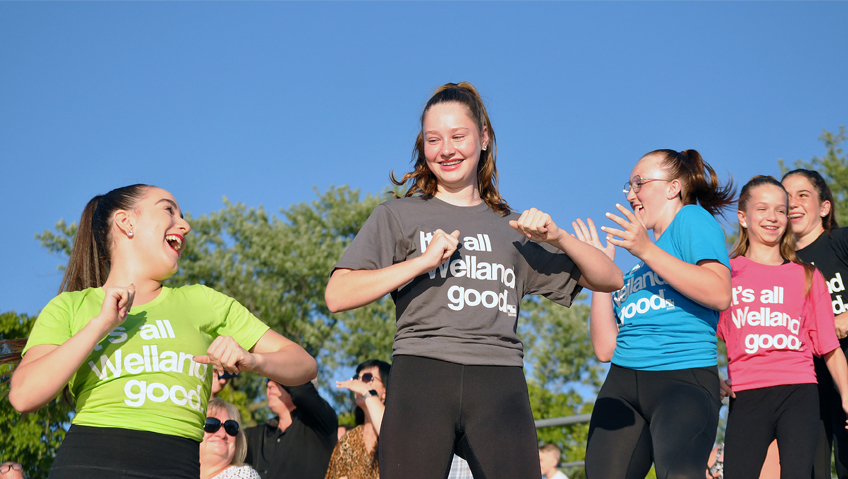The population explosion that occurred between 1946 and 1964, scientific advances that have extended our life span—with more centenarians than ever before—inflation, and rising health care costs have combined to create a perfect storm for both the economy and the Baby Boom generation, the oldest of which are now aged 77.
Or so some media reports might have us believe.
However, we need to put this sweeping statement into perspective and recognize that while there are undoubtedly challenges for the North American economy as well as the economies of most OECD countries with aging demographics, there are also opportunities.
One in five Canadians
According to Statistics Canada’s 2021 census, there were seven million people in the country aged 65 and older which, at 19 percent of the population, represents nearly one in five Canadians, with the highest numbers of seniors residing in the four Atlantic Provinces. U.S. figures are similar, with 17 percent or one in six Americans aged 65 in 2020, which represents 55.7 million people, according to a report from the Biden Administration on aging published in the Washington Post this past February.
While numbers don’t lie, they don’t tell the whole story, either, because within that over-65 demographic, there are vast differences in abilities and needs for care. The numbers should really be looked at in terms of “young seniors,” those aged 65 to 85, and “older seniors,” those over 85, which in Canada account for only 2.3 percent of the population and in the U.S., 1.9 percent. A significant proportion of them, however—more than one quarter—have mobility limitations or health-related issues and live in a collective dwelling such as a senior residence, nursing home, or long-term care home.
With breakthroughs in medical science including joint replacements, organ transplants, and better treatment for chronic conditions, the number of “older seniors” is projected to keep increasing as the leading edge of the baby boomer cohort moves into the 2030s and 2040s. Their care will continue to present challenges, according to the Statistics Canada 2021 Report on aging, putting increasing pressure on governments to ensure adequate support in housing, health care, and transportation.
Since the governments of both Canada and the U.S. know what to expect, they do have time to make changes and prepare for what is facing them. They, along with the U.K., have the youngest populations among OECD countries and are well-placed to plan for the next decade, something they’re already doing.
According to the same Statistics Canada report, many European countries—as well as Japan, which has the highest proportion of seniors—are ahead of Canada and the U.S. in terms of population aging, and they are finding ways to adapt to demographic shifts. For example, the retirement age is set to increase in Italy and most other OECD countries (although this has set off a wave of protests in France).
Changing the system
Meanwhile, some countries, including Japan, the U.K. through its ‘Lifetime Neighbourhoods’ program, The Netherlands through ‘Apartments for Life,’ and Denmark are reforming their health care systems to integrate in-home care.
In “Time to re-think seniors’ housing and long-term care in Canada” (April 3, 2020, iPolitics.ca) Alan Freeman writes, “Denmark has chosen to concentrate its health care investments on the home and community care sector, believing that the elderly are better taken care of at home.”
He goes on to say that in Denmark only 36 percent of the budget for senior health care goes to long-term care, while the remaining 64 percent goes to home and community-based care, the opposite of what occurs in North America, policies he calls “short-sighted.”
“No new conventional nursing homes have been built in 20 years,” he writes, “but when they do build new, the Danes opt for small, independent apartment units, linked to a common kitchen and garden, where seniors can age independently in a protected environment.”
North Americans are catching up. In recent years, for example, in preparation for features in our sister publication, Construction in Focus, we’ve spoken with construction company owners and CEOs, including Andrew Cameron from Northumberland Properties of Amherst and Yarmouth, Nova Scotia, who builds accessible one-level homes within existing neighbourhoods for seniors wanting to downsize; Maurice Meagher of Case Design Remodelling of Halifax, Nova Scotia; and Mark Hatfield from Homestar Inc. of Quispamsis, New Brunswick, who, among other projects, remodels homes for accessibility in two of the provinces with the highest proportion of seniors.
Although renovations are only one part of Homestar’s business, Hatfield described a heart-warming moment when he was thanked by a client who said, “Mark, you gave my wife and me ten more years in our home.”
Remaining in a home that addresses mobility needs and is fully accessible is one half of the aging-in-place equation. The other is ensuring that seniors remain active and avoid falls, because the resulting injuries that adversely affect mobility are the leading cause of otherwise healthy seniors entering nursing care facilities.
Fit for a better life
Through its kinesiology department, the University of New Brunswick in Fredericton has taken the lead on this issue by initiating, in 2019, a Zoomers-on-the-Go program. The program is spearheaded by Dr. Danielle Bouchard and offered free of charge to over 1,500 New Brunswickers, either online or in person, by certified trainers who are aged 50 and over.
The program contains a mix of cardio, strength, balance, and stretching components, with an emphasis on balance. Early studies showed that the program improves seniors’ ability to complete daily tasks such as getting up and down from a chair easily, walking long distances, and improving balance—all improvements that could lead to a reduced risk of falls.
Says Dr. Bouchard of the program, which receives federal funding and is set to be adopted across Canada, “One of the long-term goals is to show that Zoomers-on-the-Go reduces the risk of long-term care admission, hospitalization, visits to physicians, and costs to health care.”
Adds Zoomers’ trainer Crystal Grant, who holds Fitness NB Certification: “I know how easily a fall can change the course of an older person’s life. My grandmother fell and never came out of the hospital, and because of that experience, I really wanted to help people be stronger and more stable and maintain mobility.”
Having seniors age in place offers economic opportunities for community-based health care / home care which provides employment for personal service workers and cleaning services; for the construction industry through renovations, smaller accessible homes, and condos; and for tourism and hospitality offerings positioning themselves as senior-friendly, because healthy, active seniors enjoy leisure activities. Plus, there’s a benefit to the community if seniors, with their wisdom, remain a part of it, rather than being isolated in long-term care.
Shifting gears
Modern Western cultures tend to undervalue the potential of elders’ contributions, as opposed to many Eastern and traditional First Nations cultures, where elders are hugely respected and may live in extended families where they are valued and cared for.
But as Bob Dylan, one of those who spoke for the baby boomer generation sang, ‘The times they are a-changin,’ and indeed they are. In the 21st century, seniors are taking on important roles, including the Presidency of the United States. Former President Donald Trump was 70 when he took office in 2016, and President Joe Biden was 78 when he took office in 2020. Biden has announced he will run again and, if re-elected in 2024, will be 82, making him the oldest U.S. president ever.
Meanwhile, seniors from all walks of life are cancelling the stereotypical picture of seniors in rocking chairs, if indeed it ever existed. Many are caregivers for grandchildren, allowing their children to work and avoid the high cost of daycare, while others are raising grandchildren on their own. Many continue to work past official retirement age, while others who have retired are taking up a second career, establishing small businesses, working as freelancers, business consultants, as mentors within their fields of expertise, or as community volunteers, providing important services. Long may they live, to the benefit of us all.






